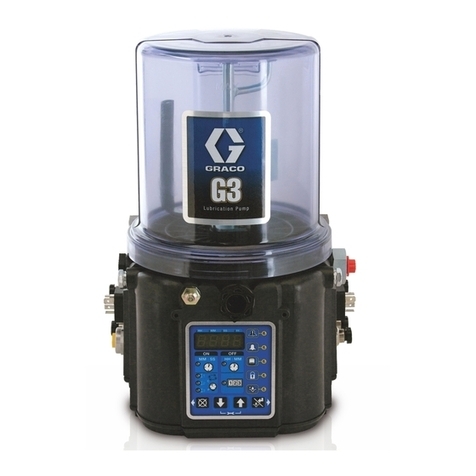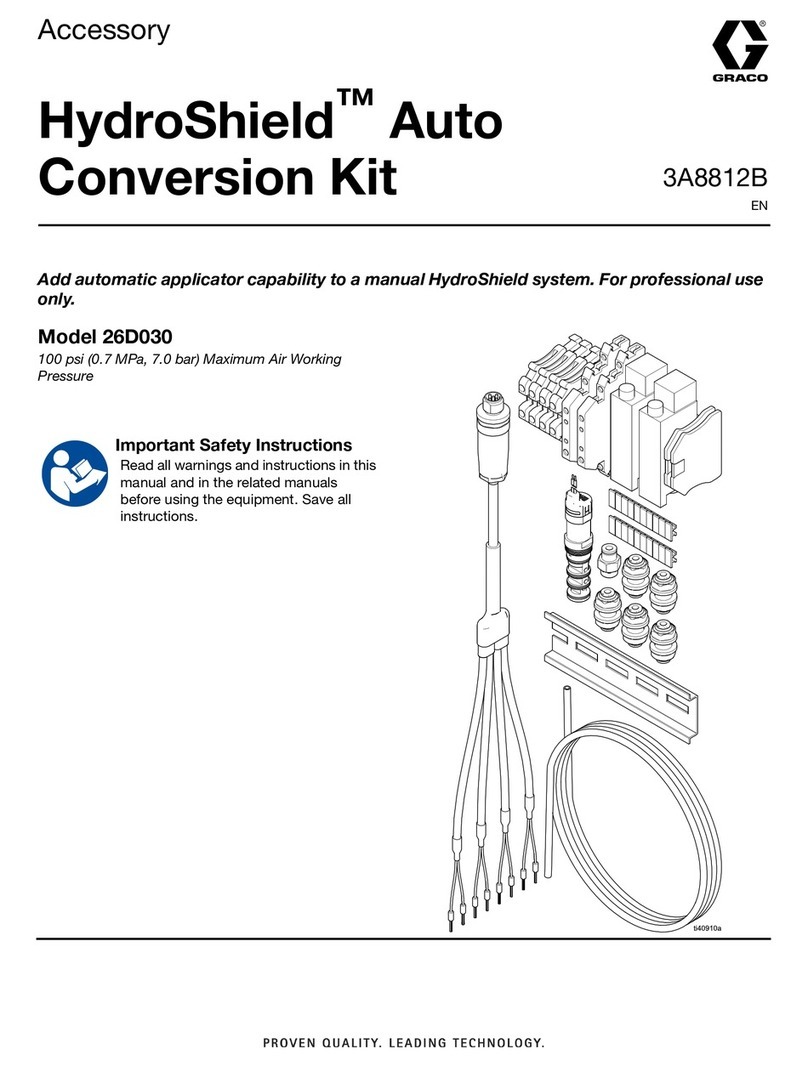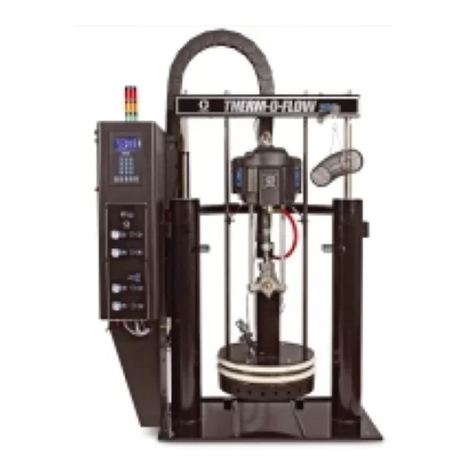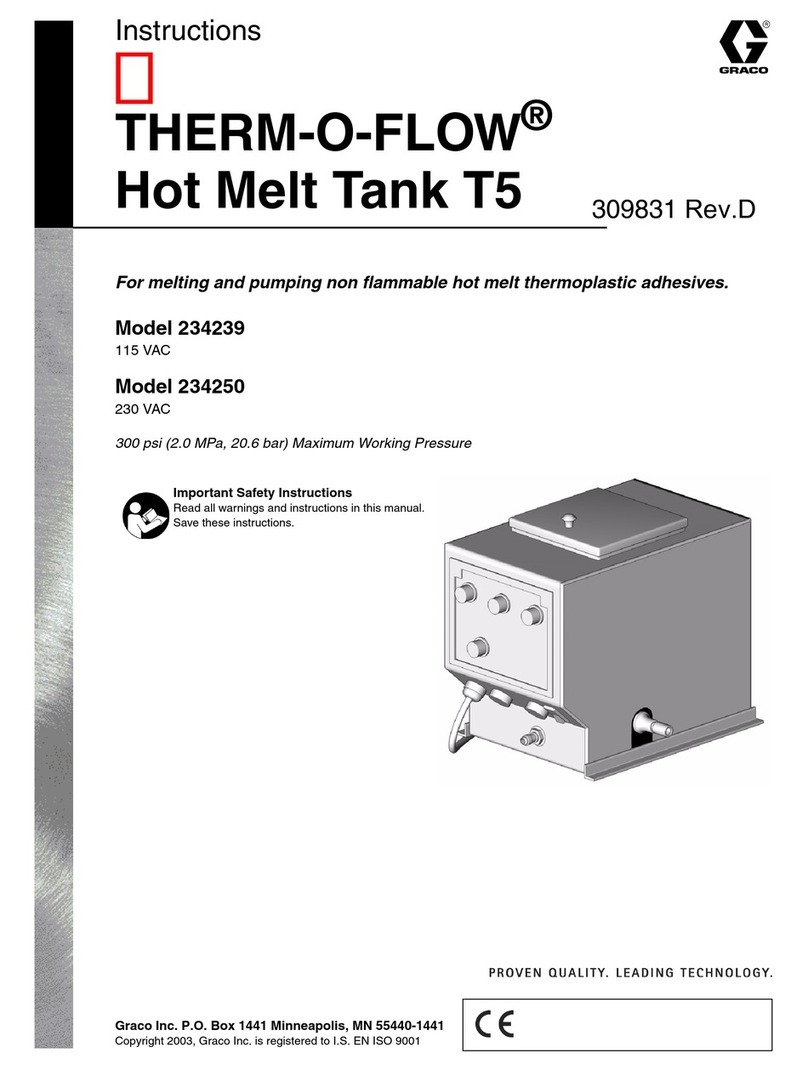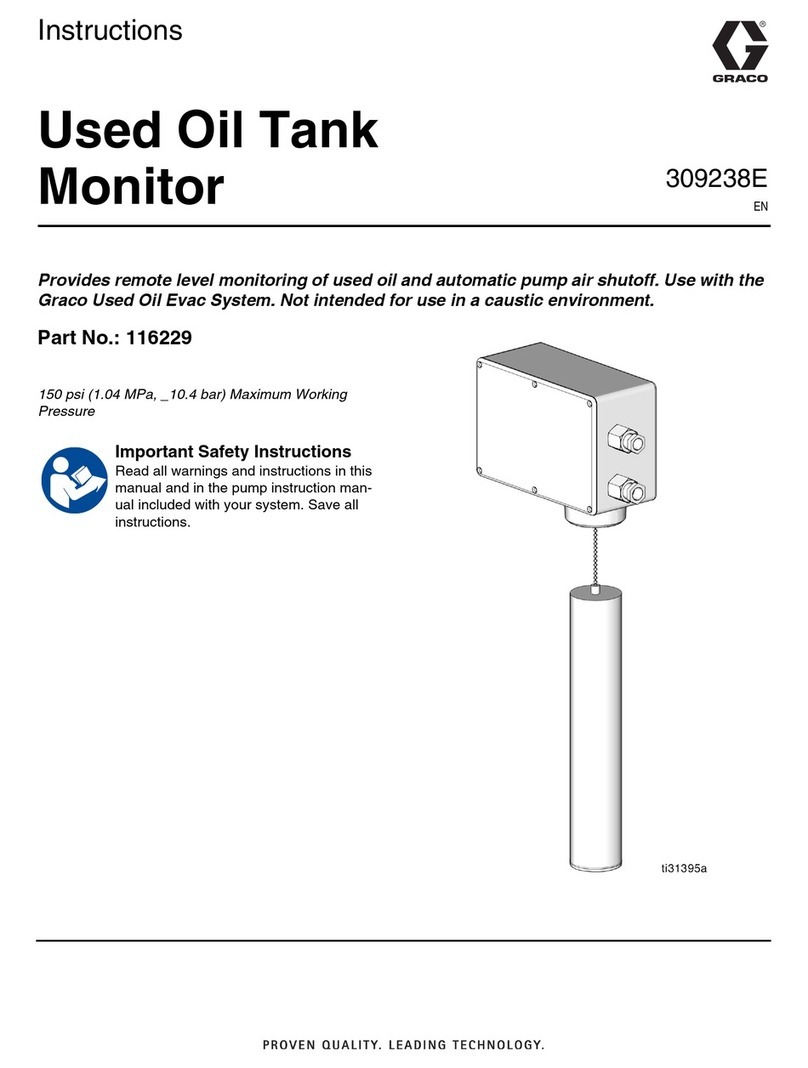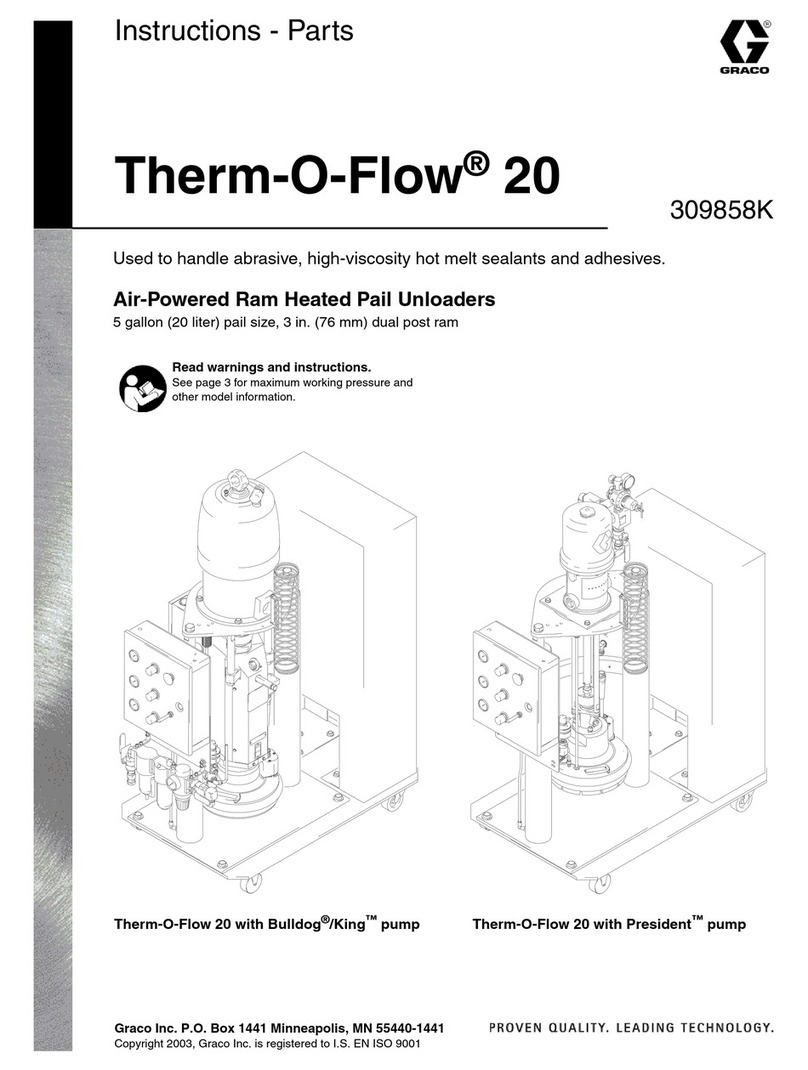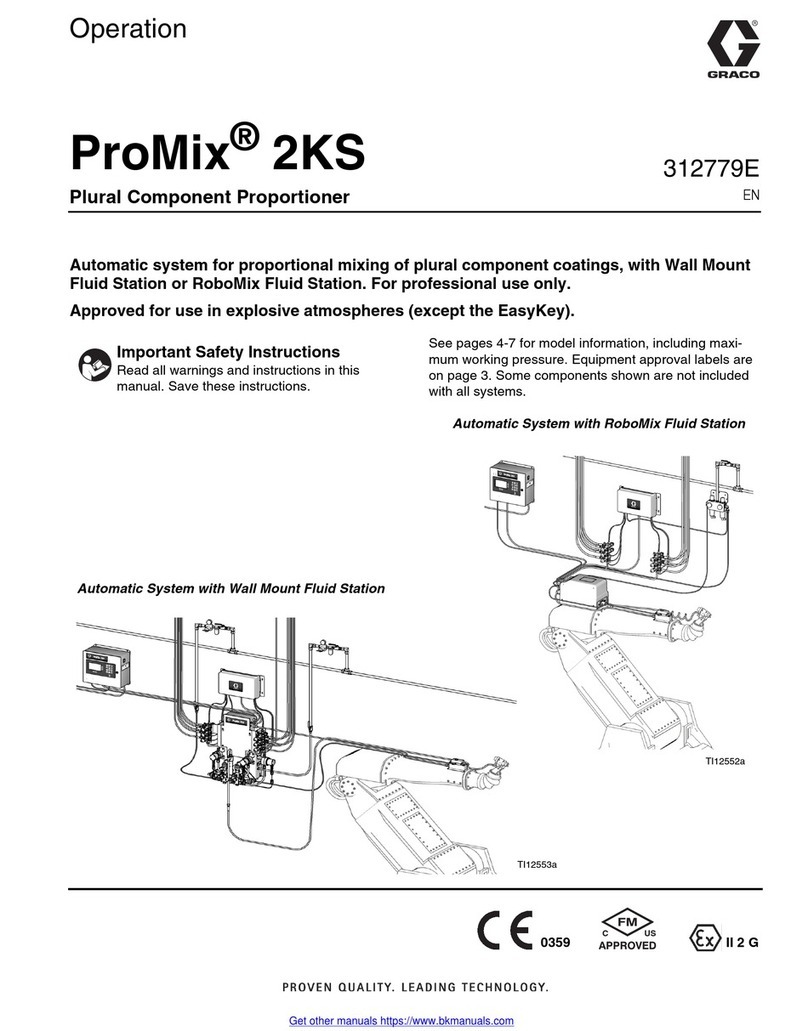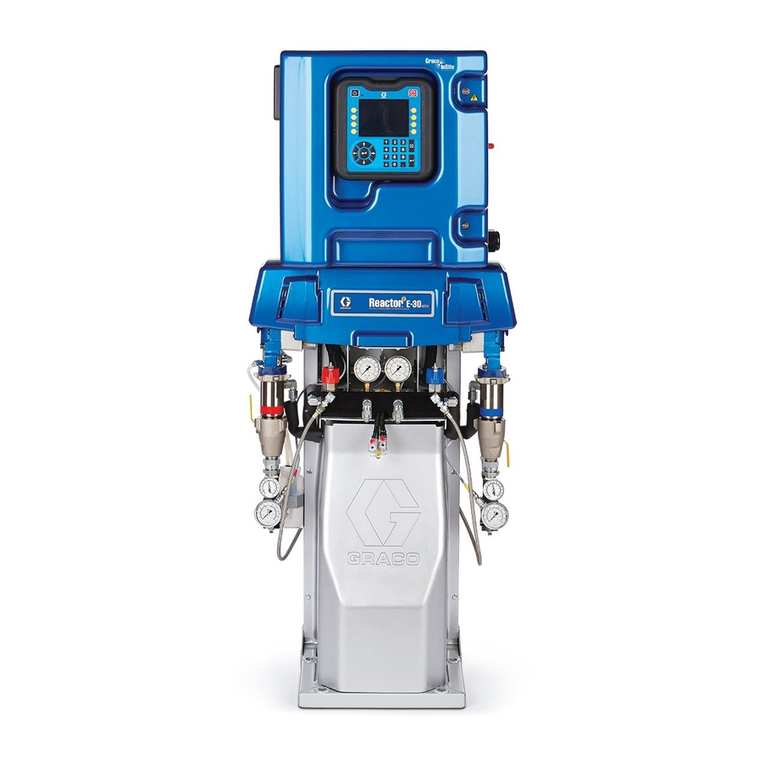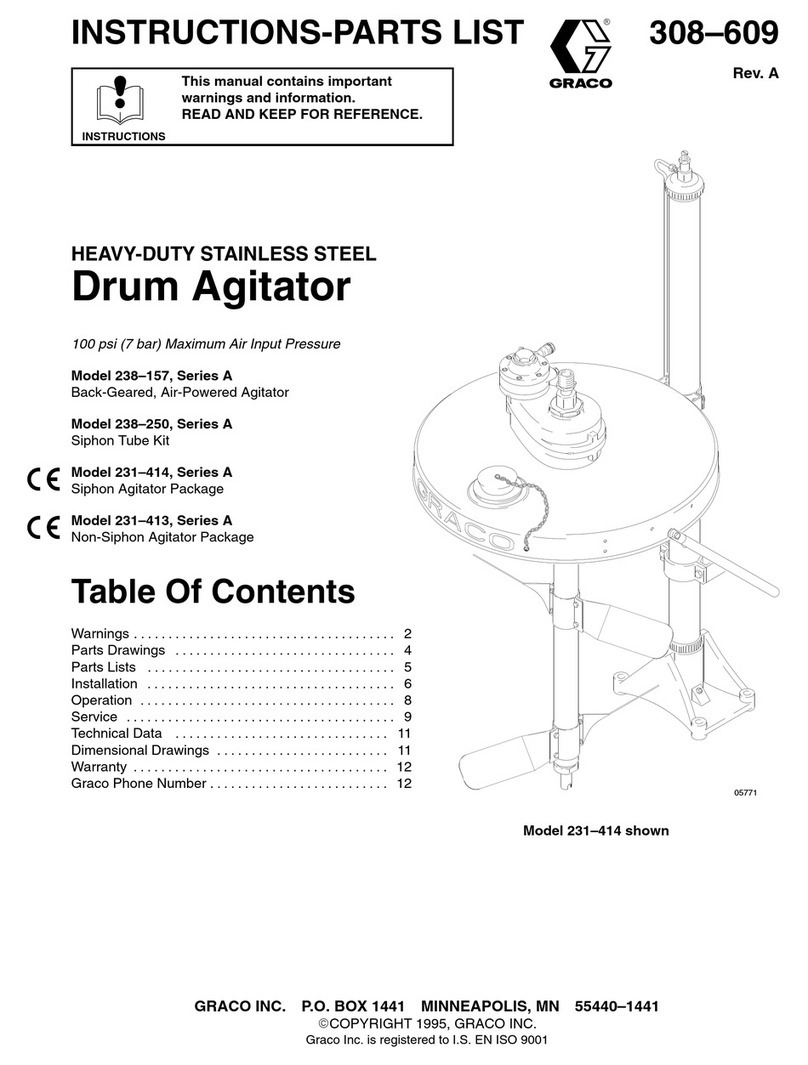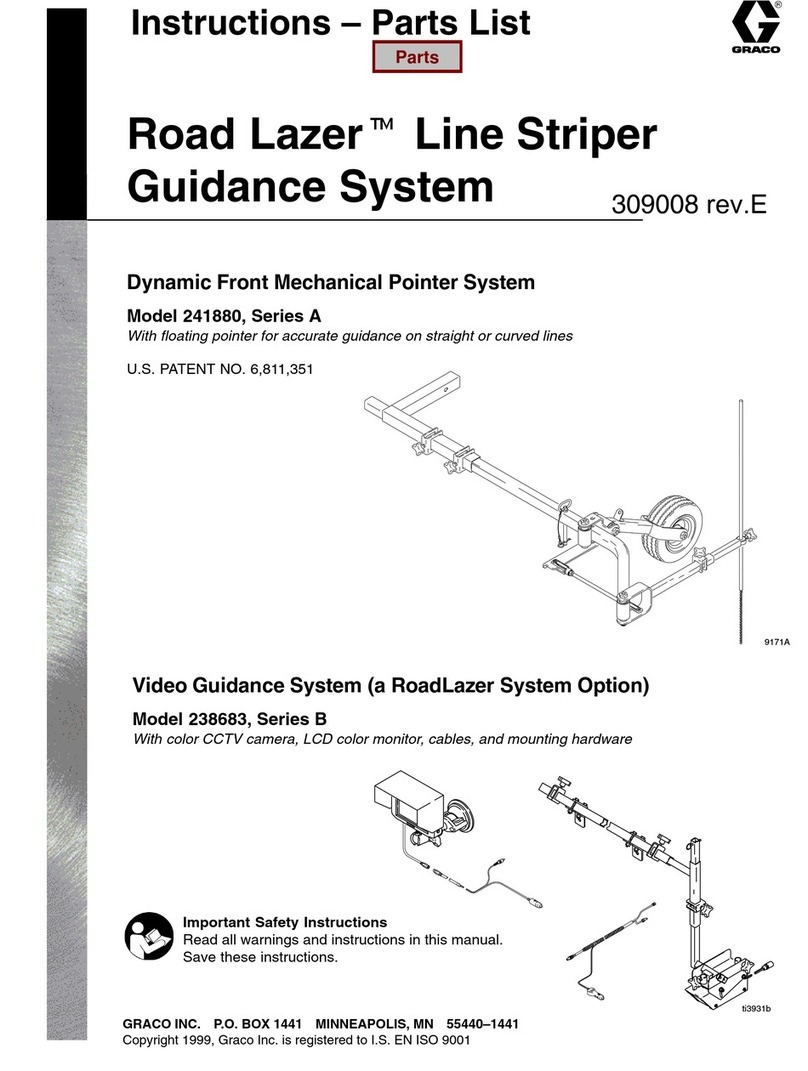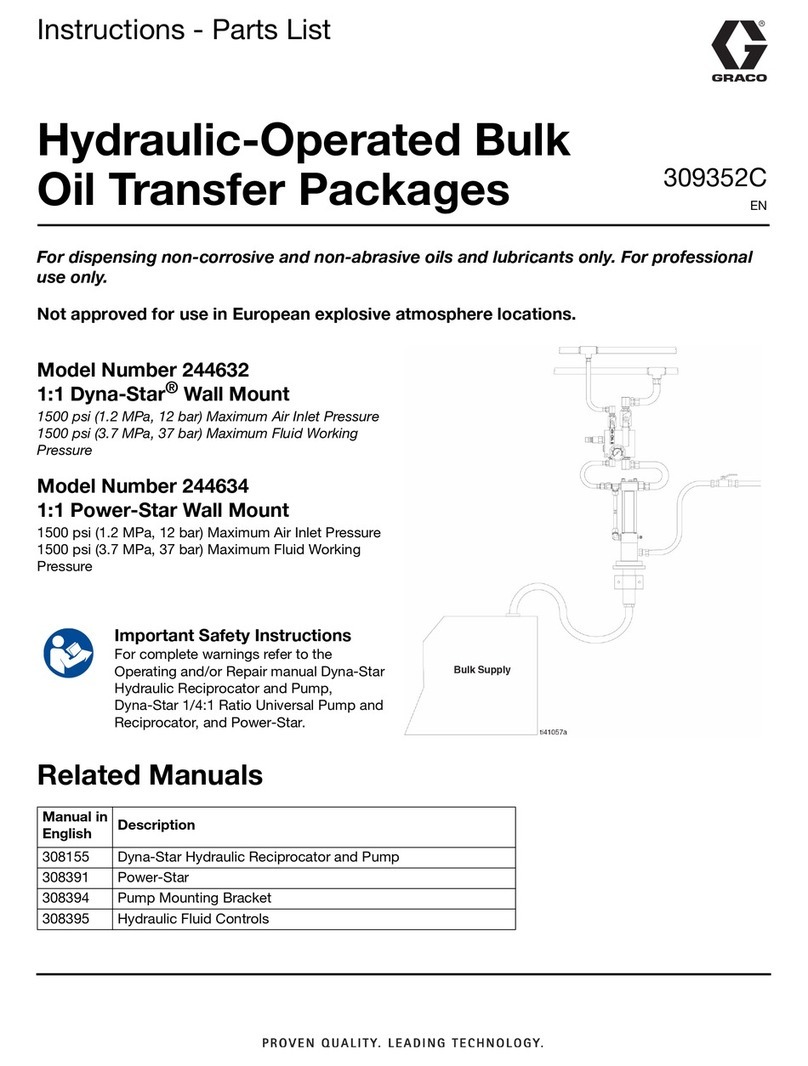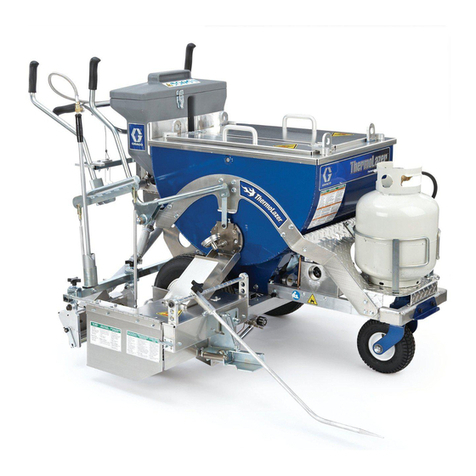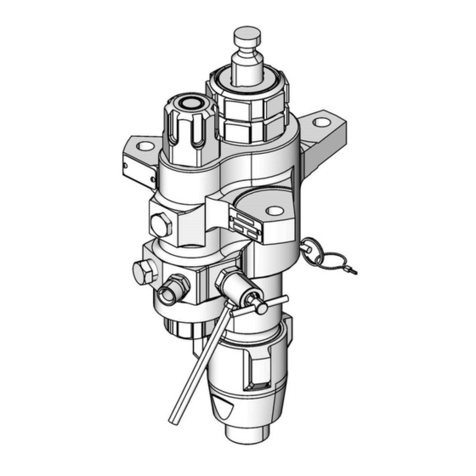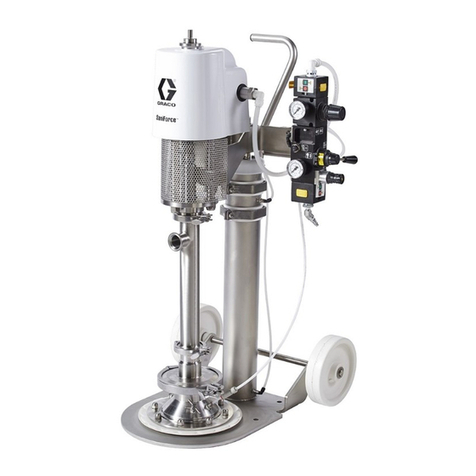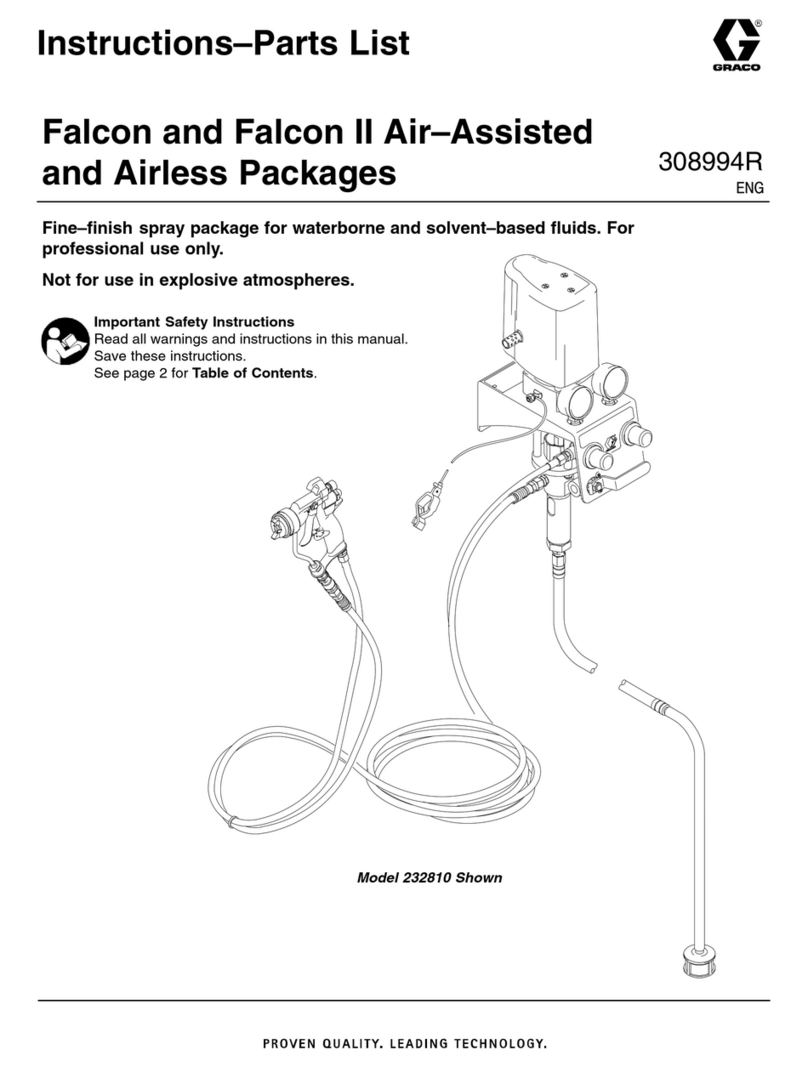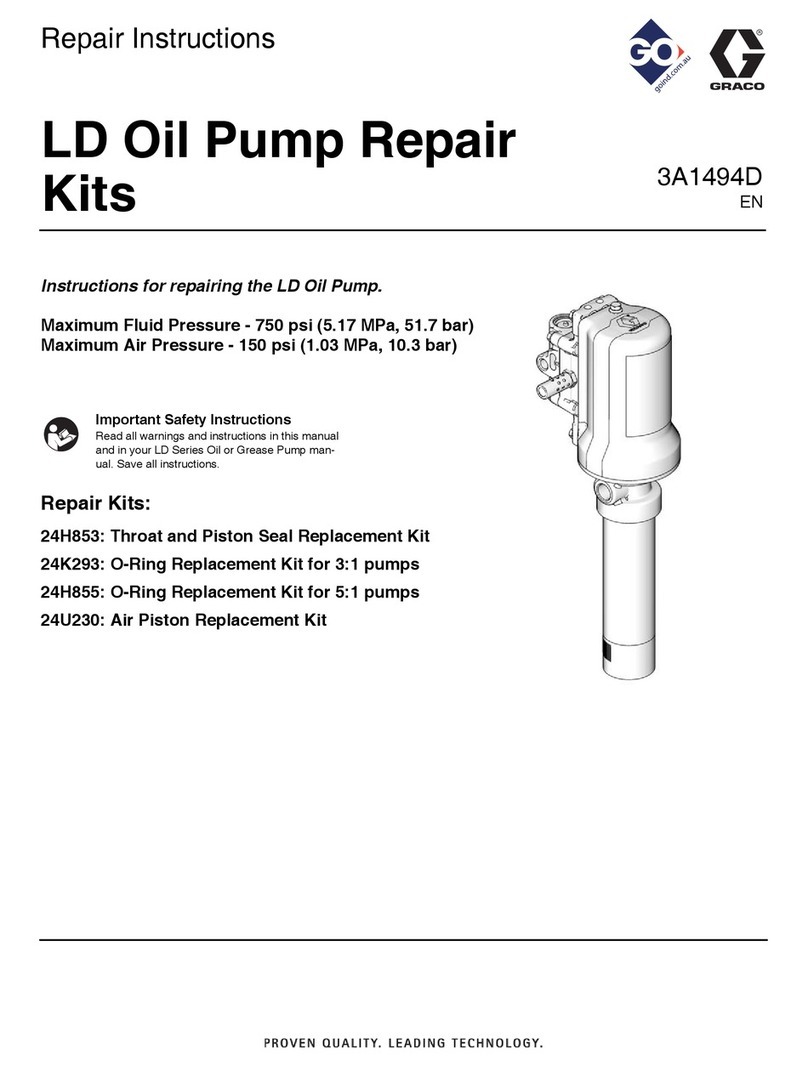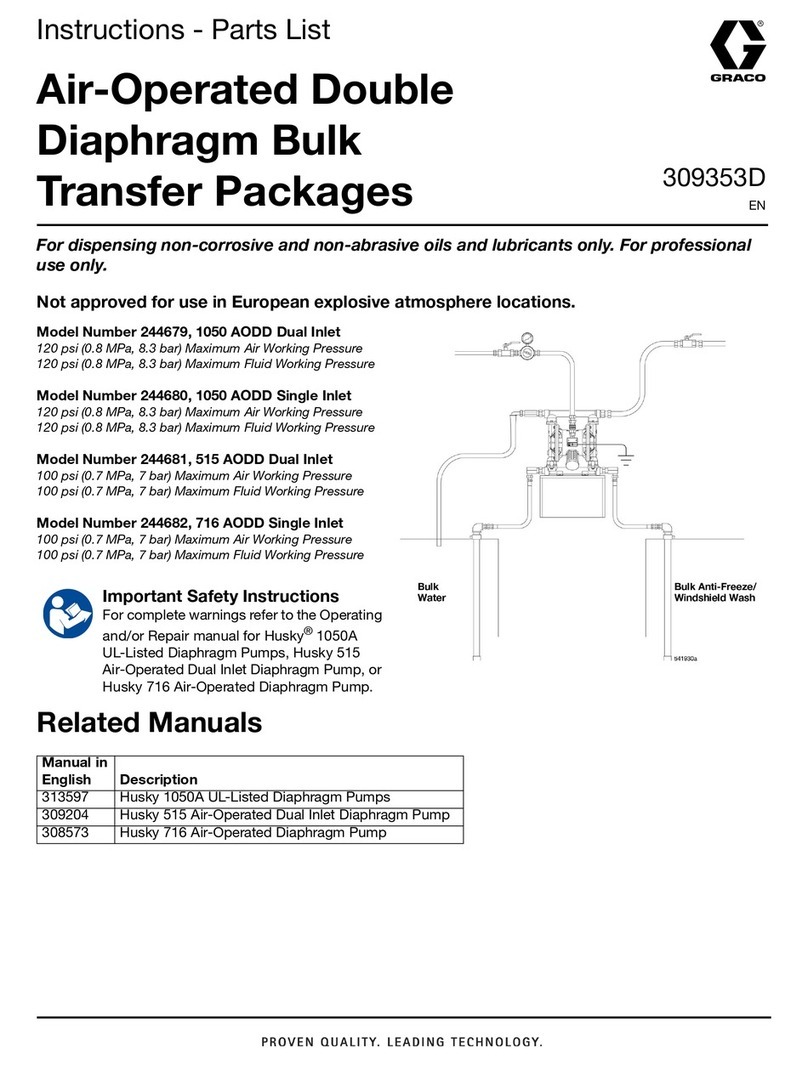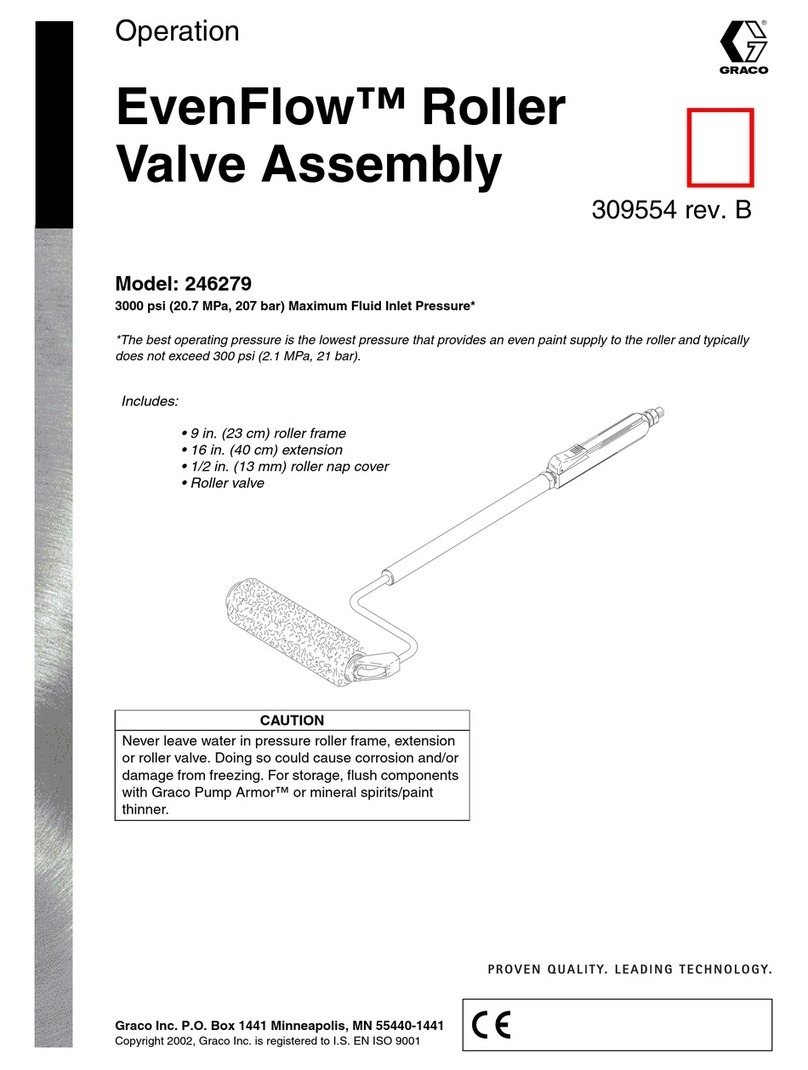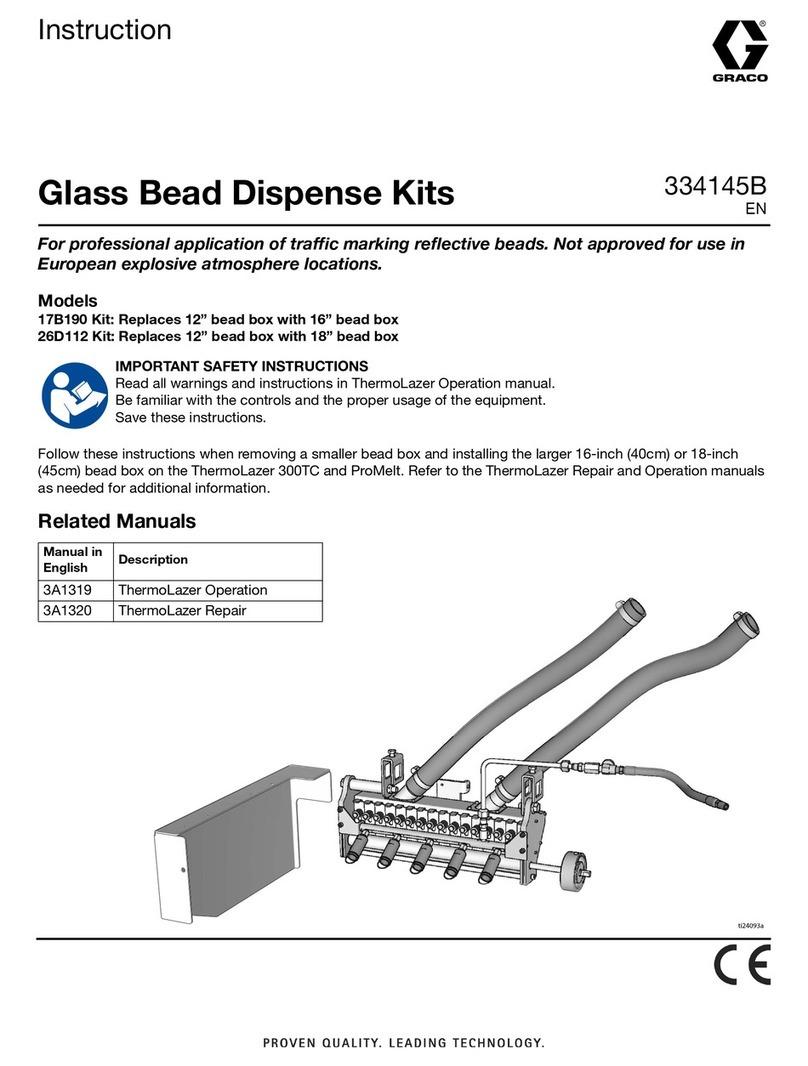
10 306-982
Service
Reassembly
1. Clean
all the parts carefully in a compatible solvent
and inspect for wear or damage. Use all the repair
kit parts during reassembly and replace other parts
as necessary
.
2.
Check the polished surfaces of the piston, piston
rod and cylinder wall for scratches or wear
. A
scored rod will cause premature packing wear and
leaking.
3.
Lubricate all parts with a light, waterproof grease.
4.
Be sure the o-rings are in place. Slide the piston
rod down through the throat bearing and lower the
piston (Y) into the air motor base (J).
5.
Pull the exhaust valve poppets (X**) into the valve
actuator (V) and clip of
f the top part shown with
dotted lines. See Fig 3.
6.
Install the transfer valve poppets (R**) onto the
valve stems (O**), then reassemble the valve
stems (O**), bottom adjusting nuts (Q**),
grommets (P**), and top adjusting nuts (M**) on
the piston (Y). Assemble the trip rod (H), valve
actuator (V), trip rod yoke (K) and toggle
assemblies (E) on the piston. See Fig 3.
7.
Before installing the lockwires (L**) in the adjusting
nuts (M** and Q**), use the special gauge
171–818 to adjust the transfer valve (N) so there is
0.145 in. (3.68 mm) clearance between the
poppets (R**) and the piston (Y) when the toggle
assemblies are in the
down
position. See Fig 3.
8.
Snap the toggle assemblies (E) to the
up
position.
Reinstall the cylinder (G) and cap nut (F).
Reassemble the air motor to the displacement
pump.
9.
Before remounting the pump, connect an air hose
and run the pump slowly
, at about 40 psi (2.8 bar
,
0.28 MPa) to ensure that it operates smoothly
.
10.
Reconnect the ground wire before regular
operation of the pump.
Throat Packing Service for In-Line Pumps
The
piston in the air motor
, located behind the air
motor plates, moves when air is supplied to the
motor
. Moving parts can pinch or amputate your
fingers or other body parts. Therefore,
never
operate the pump with the air motor plates
removed.
WARNING
NOTE:
Refer to Fig 4 and the Parts Drawings on
pages 12 and 14.
1.
Clamp the pump in a vise and unscrew the
displacement cylinder (CC) from the air motor
base (J). Pull the displacement cylinder away from
the air motor until the cotter pin (DD) which
secures the displacement pump connecting rod to
the air motor piston rod (FF) is visible. See Fig 4.
2.
Remove the cotter pin (DD) and unscrew the pump
connecting rod (EE) from the air motor piston rod
(FF). See Fig 4. Remove the cylinder (G) from the
air motor base (J) as described under
Disassembly
on page 8.
3.
Remove one louvered air exhaust plate (BB) and
unscrew the throat packing nut (HH), using a
spanner wrench or a 0.22 in. (5.6 mm) diameter
rod. See Fig 4. Remove the spacer and packing
from the base and packing nut. Clean the throat
packing area in the base and the packing nut.
Clean and inspect all parts and replace as
necessary.
4.
Lubricate the packings, piston rod and piston
flange with a light waterproof grease. Reinstall the
spacer and packing in the base and packing nut.
Be sure the lips of the v-packings face down. See
Detail B. Screw the packing nut loosely into the
base. Carefully slide the piston rod down through
the throat packing and lower the piston into the
base. T
ighten the packing nut securely
. Reinstall
the plate (BB) and cylinder (G). Reassemble the
air motor to the displacement pump.




















